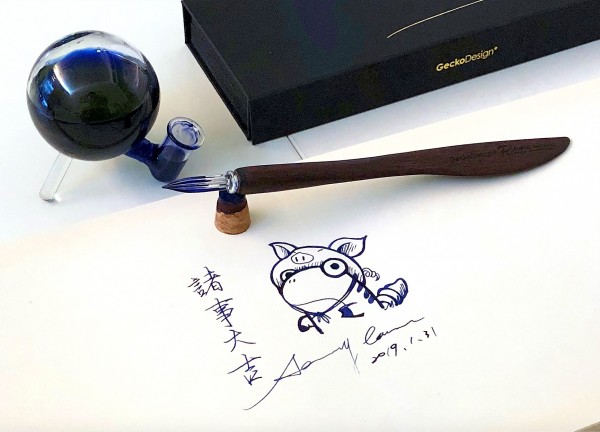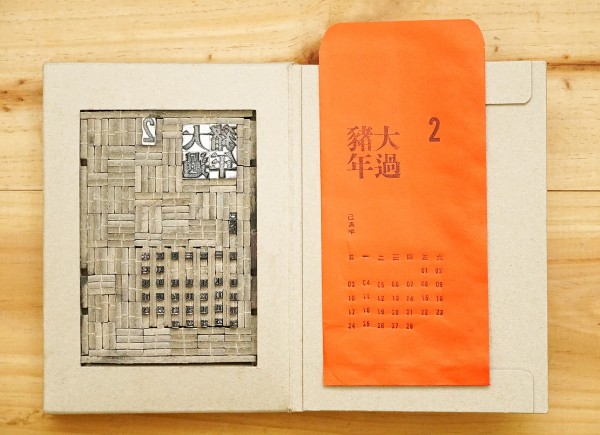《TAIPEI TIMES》 Nostalgia, love of paper inspired Golden Pin wins

The Plume Dip pen and inkwell set designed by Chan Chia-hao are pictured next to a Lunar New Year greeting in an undated photograph. Photo courtesy of Chan Chia-hao
CREATIVE VISIONS: Several designers wanted to preserve elements of Chinese and Taiwanese culture, while a dog’s water bowl proved helpful to another
By Wu Po-hsuan / Staff reporter
Despite the increasingly digitalization of the world, a number of winners of last year’s Golden Pin Design Awards share a love of reading paper, and are embracing a return to handwriting and physical books.
Muwu Design Studio (目物設計工作室) owner Kao Peng-hisang (高鵬翔), whose book The Typesetting Master’s Table (老師傅的排版桌) won the Best Design of the Year, said he had created the book as a way of preserving unique local culture.
Worried that typesetting of Chinese characters would become a lost art, he had studied its history, which can be traced back to the late Qing dynasty, when Western missionaries used the technology to publish Bibles, he said.
His book not only explains the technology and methods of traditional typesetting, but also provides a typesetting toolkit that includes lead characters, tweezers and ink.
“I have noticed a growing number of people who prefer handwriting, because of the warmth and authentic emotions it expresses,” said Gecko Design design director Chan Chia-hao (詹家豪), whose unique dip pen and inkwell also won him a Best Design of the Year in the product design category.
People nowadays send messages to each other via phone texts, but he misses the feelings that came with getting handwritten cards from friends, he said.
His glass inkwell, which resembles a teapot without a handle, comes with a cork which can be used to seal the container when not in use.
To prevent ink from flowing out of the inkwell, he studied air circulation and experimented with different shapes, he said, although the shape was actually inspired by his dog’s water bowl.
The bimonthly Chinese-language magazine Fountain (新活水) used straw boards on one of its covers to represent high walls, a concept linked to the issue’s theme of the lifting of martial law.
He reprinted the cover three times to get the right color and texture, while there were also unique designs inside the magazine, Hung Chang-lien (洪彰聯) said.
“I want to create a magazine with designs and layouts that makes reading fun and thought-provoking,” he added
Meanwhile, the winner in the social project category was a book on the culture of rice eating, a collection of stories and literature about rice-related cuisine compiled by seven media outlets in Taiwan, China and Hong Kong.
Published by Joefang Desgin Studio, the book’s pages were made from recycled rice hulls, while the cover was made from grains of rice.
新聞來源:TAIPEI TIMES
%http://www.taipeitimes.com/

A red envelope featuring a greeting for the Year of the Pig, and the month of February, printed with a typesetting kit designed by Kao Peng-hisang, is pictured in an undated photograph. Photo courtesy of Kao Peng-hisang

















